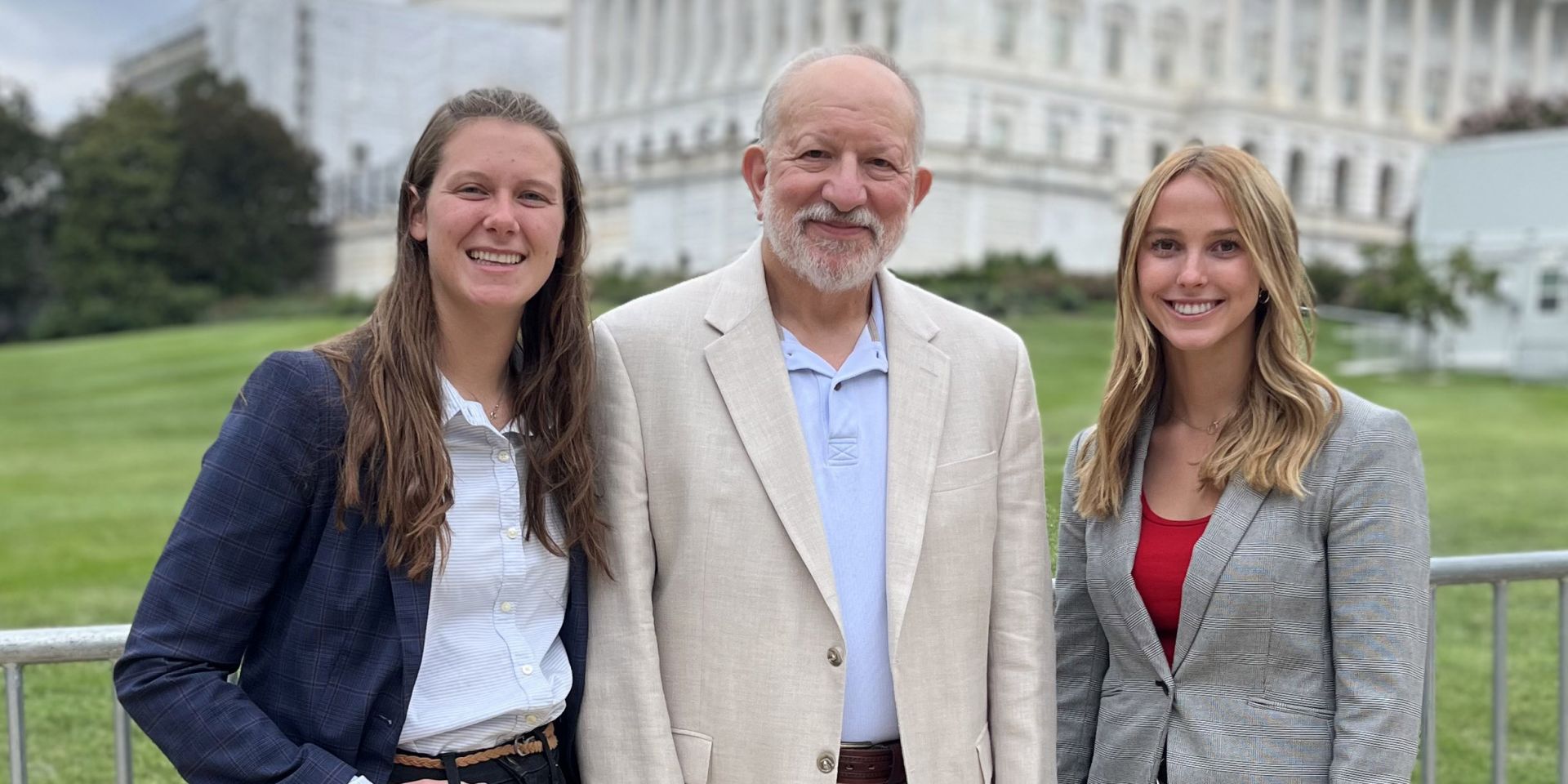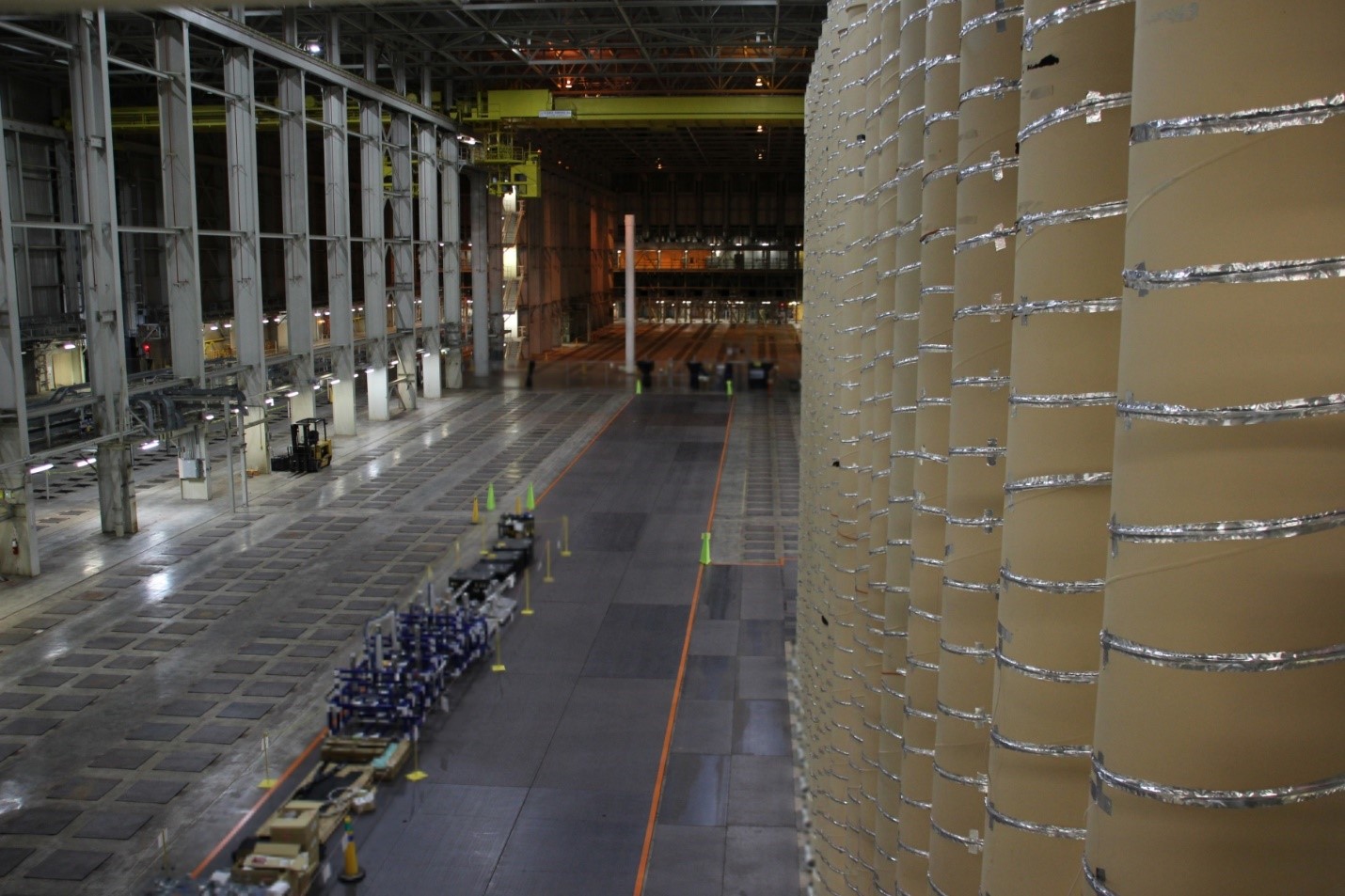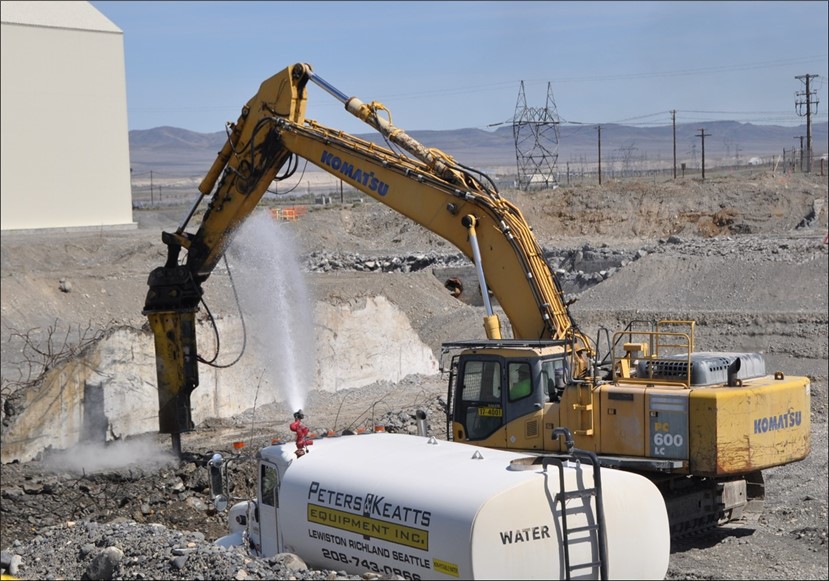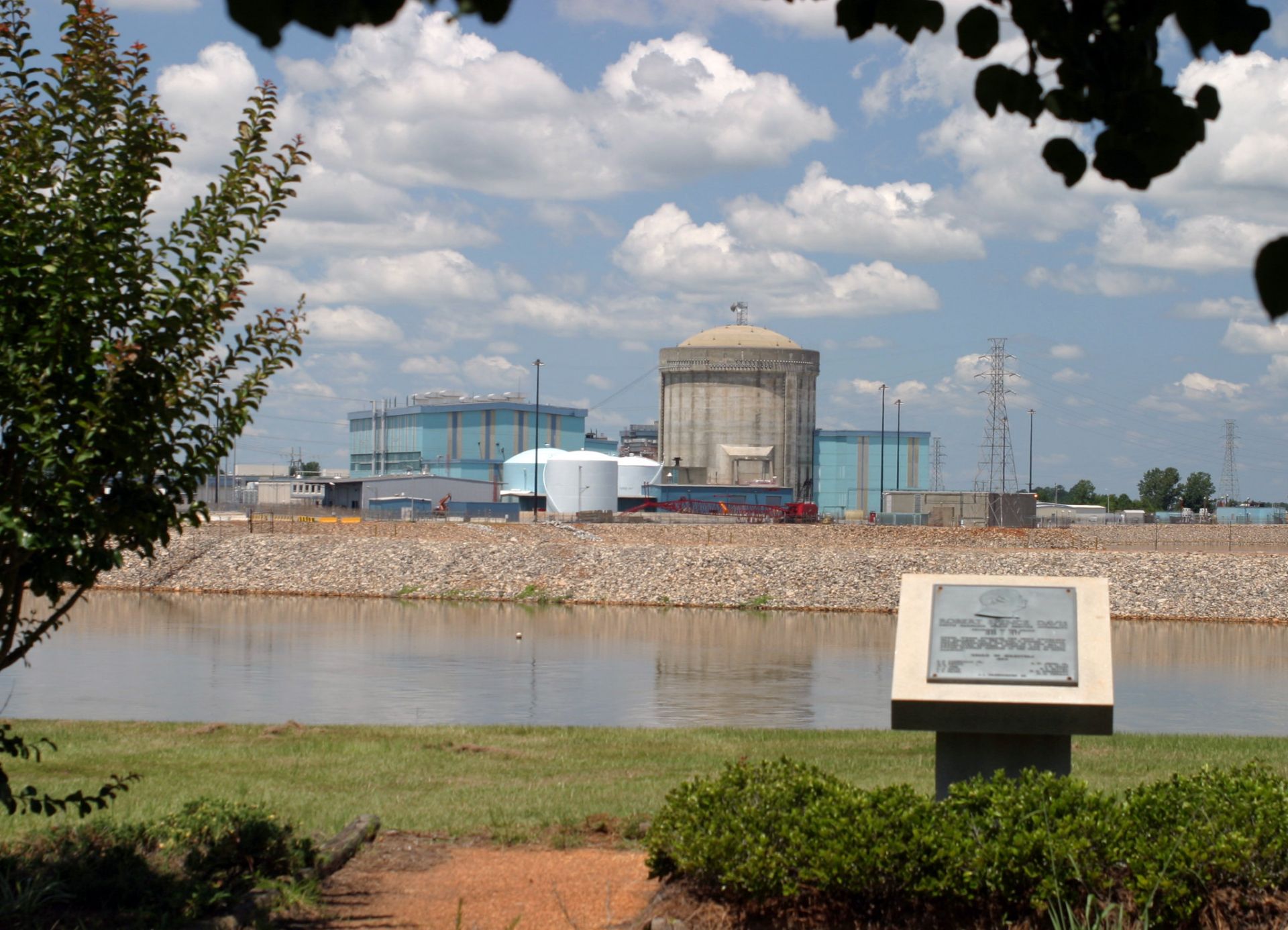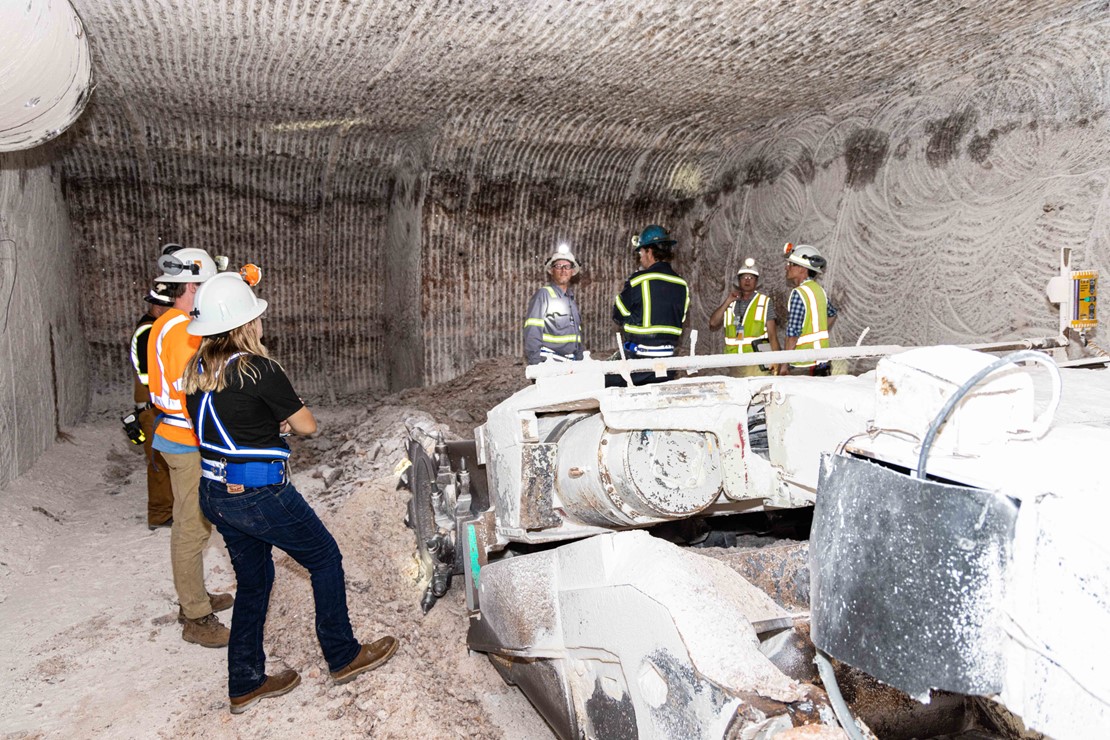An aerial shot of the Westinghouse Springfields site, located near Preston, Lancashire, in northwestern England. (Photo: Westinghouse)
Westinghouse has signed a contract with Rolls-Royce SMR to develop a fuel design for the British firm’s small modular reactor program, the companies announced last week.
The design work, to be undertaken in the United Kingdom and the United States, will include associated core components and will be based on an existing Westinghouse pressurized water reactor fuel assembly design.
ANS WISE interns Abbey Hageman (left) and Sarah Cole (right) are pictured in front of the Capitol Building with ANS WISE program coordinator Alan Levin.
This summer, the American Nuclear Society supported two student members who participated in the Washington Internships for Students of Engineering (WISE) Program, a nine-week program that gives engineering and technology students the chance to spend a summer learning about public policy. This year’s ANS-sponsored WISE interns, Sarah Cole of Boise State University and Abbey Hageman of the University of Nevada–Reno, arrived in Washington, D.C., in May, where during the course of the program they made professional contacts, researched and presented policy papers (published in the WISE Journal of Engineering and Public Policy), and learned how government officials make decisions on complex technological issues—and how engineers contribute to this process.
The 16-centrifuge HALEU demonstration cascade sits within a vast DOE-owned facility with room for more than 11,000 centrifuges. (Photo: Centrus)
American Centrifuge Operating (ACO), a subsidiary of Centrus Energy, has started enriching uranium hexafluoride gas to high-assay low-enriched uranium (HALEU) levels at the Department of Energy’s enrichment facility in Piketon, Ohio, the DOE announced October 11. The HALEU will be used to help fuel the initial cores of two demonstration reactors awarded under DOE’s Advanced Reactor Demonstration Program and will also support fuel qualification and the testing of other new advanced reactor designs.
Crews with Hanford contractor Central Plateau Cleanup Company break up concrete and remove contaminated soil near the former K Area reactors on the Hanford Site earlier this year. (Photo: DOE)
The Department of Energy is seeking the public’s input on the Hanford Site’s 5-year plan, which outlines planned cleanup work either to be completed or initiated at the former plutonium production site near Richland, Wash. The DOE updates Hanford’s 5-year plan annually to reflect current progress and ongoing integrated planning for future work at the site.
A ribbon cutting marked the opening of Bechtel’s Engineering Execution Center in Knoxville, Tenn. Pictured, from left, are Glenn Jacobs, Angela McAlpin, Sujal Lagowala, John Howanitz, Craig Albert, Wes Hines, and Mark Field. (Photo: Bechtel)
International engineering, construction, and project-management company Bechtel, which is headquartered in Reston, Va., opened its newest office, the Engineering Execution Center, in Knoxville, Tenn. The office—the second Bechtel has opened stateside in the last few months—will provide engineering support for the company’s numerous mission-based projects, and it is the second new U.S. office opened by Bechtel in the past few months—the other being in Chandler, Arizona.
Dominion Energy's V. C. Summer plant near Jenkinsville, S.C. (Photo: NRC)
The Nuclear Regulatory Commission last week issued a preliminary “yellow” finding to Dominion Energy for failing to resolve a two-decade-long problem with cracks in the piping of the V. C. Summer plant’s emergency diesel generator (EDG) fuel oil system.
Idaho National Laboratory's TREAT reactor. (Photo: INL)
Researchers at Idaho National Laboratory have a new experimental tool to study nuclear fuel under simulated loss of coolant accident (LOCA) conditions in INL’s Transient Reactor Test (TREAT) Facility. A specialized experiment holder called a TWIST capsule holds a fuel sample surrounded by water, which can rapidly drain away during testing, simulating loss of coolant in a light water reactor environment.
Mining crews view progress in an ongoing mining tunnel, known as a drift, at the WIPP facility in New Mexico. (Photo: DOE)
The New Mexico Environment Department (NMED) signed a final order approving a 10-year permit renewal for the Waste Isolation Pilot Plant (WIPP), the nation’s deep geologic repository for defense-related transuranic (TRU) waste.
IAEA director general Grossi delivers the opening plenary at the Second International Conference on Climate Change and the Role of Nuclear Power. (Photo: IAEA)




